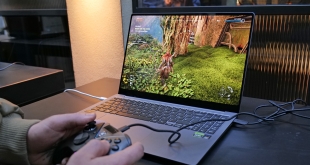In a recent article on DX11 market size, KitGuru explored the powerful benefits to being first to market with a new version of DirectX hardware. However, that hardware is tied into the operating system. No new Windows means no new DX. In moments like these, graphics manufacturers turn to the benchmarks and ask themselves, “How can we own the independent benchmarks that will be used to test hardware?”. Good question.
Crysis was an enigma. Almost universally hated as a game, while being used universally to test DX10 hardware.
Back in June, Zardon pondered whether the original Crysis was an all-time masterpiece or simply so badly conceived/written that it still brings powerful systems to their metaphorical knees.
Roll the clock forward and we are now living in the shadow of Crysis 2, due in stores across the UK on 25th March 2011.

No one can say for certain if Crysis 2 will become the same benchmarking standard as the original, but nVidia is taking no chances.
nVidia is taking no chances to the tune of $2 Million.
For that, it will not only want exclusive marketing rights – nVidia will also want to make sure that Crysis 2 is stressing the right parts of the graphics card. Cynics would guess severe levels of tessellation and PhysX will become significantly more important to the Crysis 2 development team overnight (even if they, somehow, missed including the right levels over the previous 3 years of development).
The real question here must centre on why AMD, at nearly twice the size of nVidia and with serious dominance in the DX11 market space, didn't simply put more money on the table than nVidia?
KitGuru's dropped emails into both companies, asking for their opinion on whether controlling the in-built benchmark for Crysis 2 is worth $2 Million. If we get a reply, which we doubt, then it will get published here.
The only 100% clear winner here is EA.
Even though the game is several months from launch, they have already started to discount the price by almost 25%. That's a pretty serious discount and can't easily be construed as a sign of confidence.
If Crysis 2 costs £26.99 at launch ($40), then the price will almost certainly drop steadily to around £10 ($15) in a matter of months. Let's say that the average copy will sell for £20 including VAT. That's £17 without tax. Out of that, you need to extract a profit for the store that sells it and any distributors who hold stock.
If EA is able to take £10 ($15) from each sale and pay the developer just over £3 ($4.60), then EA is looking at a gross profit of just under £7. Changing Great British Pounds to the Dollars of the United States, we get around $10. That makes the next bit of maths nice and easy.
By taking $2 Million out of nVidia's marketing coffers up front, EA has the equivalent of 200,000 sales worth of profit. Nice.
Given how complex and costly it is to create a decent game (let alone the expenses associated with the thousands of man hours that nVidia's DevRel engineers and driver team will need to spend optimising the in-game benchmark for Fermi), it's a smart move by EA to take the cash – and it could well be a wise move by nVidia to get Fermi back on track next year.
KitGuru says: The STONE COLD KILLER move here would be to bundle Crysis 2 with nVidia cards sold in Q2 next year. No matter what AMD's product stack looks like, it would be hard to resist buying an nVidia card and getting the full version of a Triple-A game just as it launches. When ATI included Half Life 2 with the original 9600/9800 cards, those cards topped the Steam Powered Stats Survey almost immediately. Fingers crossed that Jen Hsun is planning on giving all the nVidia fans out there a second Christmas in 2011.
Squark below, head shots in the KitGuru forum.
 KitGuru KitGuru.net – Tech News | Hardware News | Hardware Reviews | IOS | Mobile | Gaming | Graphics Cards
KitGuru KitGuru.net – Tech News | Hardware News | Hardware Reviews | IOS | Mobile | Gaming | Graphics Cards



